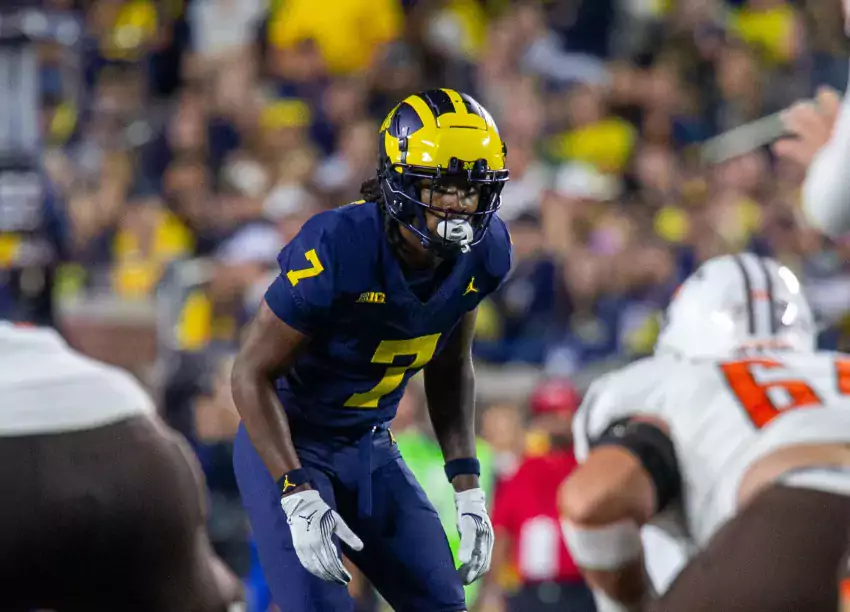
Neck Sharpies: Caught on the Switch

One of the few defensive breakdowns against BGSU was a 3rd & 15 conversion. On the podcast I said it was a good example of a young player in a complicated defense. Explaining what happened was a bit in the weeds for the podcast, but it's a good opportunity to talk about how Michigan's switch zones work, why they tend to break down at the linebacker level most often, and my thought process as I grade them. Also everybody else is going to be covering the interceptions, and there was very little else to talk about from this game. Switch coverages it is!
Here's the play.
Let's discuss.
[After THE JUMP]
SWITCH COVERAGES
…are what we call zone coverages where the defense has defenders take zones that they're not expected to be in. Every zone team uses them—it's hard to "disguise coverages" otherwise. But Michigan and the Ravens they're modeled after use them more than most, meaning they will have more of their defensive players take more zones than usual.
Let's take a common route combination against a good ol'fashioned Cover 3. A smart QB will see the alignment here before the snap and recognize he's got either Cover 1 or Cover 3. He has trained his eyes to recognize holes in this setup, for example if the Free Safety gets on top of the Z receiver's post route that means the X should be crossing his face and finding space.
A switch coverage flips zone responsibilities between various players to sow confusion.
There are of course endless variations and different types of coverages depending on what your guys can do. You can see why Michigan likes its quick and sorta hybrid linebackers who can cover all kinds of zones: those guys are starting in the middle of everything, and thus can pop up in any kind of zone. As you might imagine, this also lends itself to all kinds of weird alignments. Many Cover 3 teams will show a Cover 2 pre-snap anyways, but that's far from the limit.
Here's a switch coverage from The Game last year that Cody Alexander covered in HTTV 2023.
Alexander:
Pre-snap, all Wolverines were within ten yards of the ball. The positioning of the safeties did not indicate that they would be playing zone coverage; if anything, it looks like Cover Zero or pure man-to-man with no help, with the WILL and boundary safety (up top) stationed so that the LB could come on a blitz.
Post-snap, the contour changes, forcing the QB to re-do his reads. Now the boundary safety is positioned in the middle third, while the WILL, MIKE, and boundary CB create a Cover 2 triangle into the boundary. The vertical routes are quickly covered, and the QB has nowhere to go, forcing him to scramble.
The weirder your switches, the more you can disguise your coverages, and presumably the longer a quarterback will have to stand in the pocket trying to figure out what happened to all of his tells.
There are costs to this however. For one, your players have to be practiced at the nuances of a lot of different types of zones. In the example above Michigan had a linebacker and a cornerback playing flats. Compare that to a dedicated Pattern-Match Cover 3 system like Alabama's, where the OLBs and safeties are experts at curl/flat zones, have seen every little way those zones get attacked, and have practiced their responses with their teammates countless times.
Second, you sacrifice some best practices from standard zones out of standard alignments. The nice thing about having a cornerback cover a deep outside third is they take the same path to their zone as the receivers, whereas a safety can't get to an immediate route underneath. Curl/flat defenders usually come from an advantageous spot to cover a quick seam or slant on their way. Your hole defenders—usually linebackers—are in position to fill interior run gaps.
There are also limits, of course. You also still need to align a defender over every receiver with a free release, unless you want them to be free to catch the ball underneath while their momentum is carrying them downfield.
Also if you want a linebacker to cover a deep middle third you should probably have some safeties to either side.*
The added complexity can be hell on quarterbacks; it certainly did its job against Ohio State's pro-style passing attack the last two years. But it does leave holes for smart quarterbacks—or smart quarterback coaches on the sidelines—to attack while defenders fly around trying to get to faraway zones.
* [This is called a Tampa 2, and if you're thinking a Tampa 2 is just a Cover 3 with a smaller middle third zone: It is].
THE SETUP
Prior to the snap against Bowling Green, it looks like Scot Loeffler or someone on his sideline noticed the tight end might be uncovered. The tells are subtle, but Paige is setting up close to the hash mark, a pretty good sign that he's trying to get outside leverage off the snap. Somebody else must have him inside.
The call comes in from the sideline. Watch where the QB, Camden Orth, looks right after Loeffler said something to him. It's at the TE, and Paige above him. Michigan also has three guys lined up over that edge threatening a blitz.
The QB and his receiver are trying to figure out which of these defenders is actually responsible for them. They know Michigan likes to get tricky, and may be setting some kind of trap to give them this read that they'll walk right into. The hole is an especially tricky area to attack because so many defenders could conceivably get there.
BGSU might think it's one of the blitz threats, probably the linebacker Junior Colson because he's in position to step back and be right in the tight end's route. The last concern is the WLB, Ernest Hausmann, who would be coming from the side—not ideal for tackling but certainly in position to force the TE to shield the ball and lose his YAC opportunity.
If they do have a trap set for the tight end, Bowling Green has an out. Sainristil is also lined up outside of the slot receiver, meaning both DBs are likely taking zones outside the hashes, and the H has a good shot of getting inside leverage. If the defense is overplaying the tight end, that should free the same route from the slot receiver. Easy read. Sorta.
THE PLAY
At the snap the coverage begins to be revealed. Sabb is going high, Paige has the hole zone along the bottom hash and Hausmann has the hole zone along the top hash, while Sainristil, who was lined up over the slot receiver on the bottom hash, is really the curl/flat player.
On replay you can see how Paige's alignment perfectly set him up to step between the quarterback. You can also clearly see Orth watching the spot at the top of the Block M for any sign of a defender.
It also clears up who was not in his zone: Hausmann. A big clue is how close he and Sabb end up. Sabb is the umbrella defender, responsible for keeping everything in front. That precludes him from any responsibility for the area underneath or to the side of this receiver.
Hausmann, meanwhile, is just standing there. He's also got his eyes on something. Of course.
Hausmann has the running back if he heads out in a pattern. Hausmann also has to help Stewart and Wallace on any in-breaking routes. In short, Hausmann has a lot on his plate in this defense. To take care of all of those jobs is possible, but it would require him to sense the RB was staying in to block, and know when the X receiver to his right went vertical that he no longer had to worry about any other pass threats over there. If Hausmann had run this a thousand times, he probably figures that out, cheats to the hash mark, and when the throw comes he's in position to at least tackle on the catch.
The amount of time he has to make this decision is infinitesimal. Here's the frame where he should be making his break inwards (and should be on the hash).
Here's the frame where the pass leaves the QB's hands. Hausmann used it to step one more yard back, and no closer to the hash mark.
The ball is about to be caught and Hausmann is only now shifting his momentum. 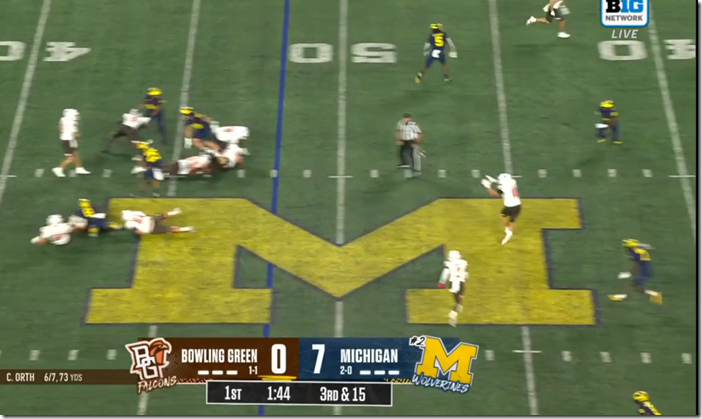
It's the half-second the tight end needs to collect the pass, turn away from Paige, and start moving upfield.
And be well on his way to the sticks when Hausmann finally does make impact.
HOW I GRADE THIS
The UFR system isn't an exact science but a play like this is supposed to add up to about a –3 when all parties are included. The pass rush isn't that relevant since they brought four and the ball was out quickly. The difficulty of the defense, and the fact that Bowling Green found the guy with the most on his plate and checked into a play that attacked him, make this a Rock, Paper, Scissors win for the offense. But you have to figure if BGSU took the bait, they're still getting tackled to set up 4th & 5. The last five yards are Hausmann setting up outside and not reacting quickly enough. RPS-2, Hausmann-1, Cover-3.
Also he was a little short of the yellow line, but those are seldom very accurate. Also the right guard should have gotten a clipping call for taking out Moore's knees while he was engaged with the right tackle.
HOW YOU CAN WATCH FOR THIS STUFF IN THE FUTURE
One play live is usually too hard to figure out the exact coverage. What you can do is start watching which defenders line up over which receivers, and then see how that morphs once the play begins. Defenders usually align a little outside—it's easier to break in towards the QB than away—but deviations of more than a yard are often a sign. A guy leaving the player he was lined up over is a sign it's a zone coverage. Two defenders lined up over the same receiver is often a tell that the lower one is blitzing. Two defenders close to bumping into each other without any receivers in the area means one of them is in the wrong spot. And finally, when you're in doubt on the coverage, if someone is rolling up to the middle—yes even if it's the middle linebacker—it's probably Cover 3.
September 19th, 2023 at 9:19 AM ^
Thank you, Seth. It's an excellent way to kill 30 minutes before work starts.
September 19th, 2023 at 10:07 AM ^
Its also an excellent way to kill 30 minutes after work starts.
September 19th, 2023 at 10:49 AM ^
Boss makes a dollar, I make a dime. That's why I read mgoblog on company time.
September 19th, 2023 at 9:33 AM ^
in our defense hausman would indeed be responsible for the RB, but his alignment was wrong from the get-go. he should've been aligned closer to the middle of the field, at least over the RG, and more likely over the C or even the LG given how the other defenders are arrayed. i'm going to guess that was part of the discussion with hausman at sunday night's film session.
September 19th, 2023 at 11:45 AM ^
Is he supposed to have outside leverage on the RB just like Paige does on his guy? That would be the only reason his alignment would be so far outside. He does have outside help though with the corner playing the flat, and inside leverage would allow him to cover a curl route as well as the TE.
September 19th, 2023 at 11:53 AM ^
Maybe? My takeaway from MGoBlog's explanations of the "Ravens" defense is that they use things like alignment and leverage to play mind games with the QB. Opposing QBs are trained to look at positioning to figure out the coverage. Michigan is all about making the coverage difficult to figure out, by doing unsound things. But there's a risk in looking too much like a certain coverage, if you can't get to your actual assignment in time.
OTOH, Seth claims Hausmann wasn't on the same page so sure, it's likely he screwed up his alignment as well. I'm just saying that alignment isn't necessarily an indication a player is lost, for this particular defense.
September 19th, 2023 at 12:16 PM ^
pre-snap, i'd agree with you. but once the ball is snapped he needed to get to the right place immediately. instead, he didn't move. he was not on the same page, he blew the coverage call. no big deal, that's why we play these live scrimmages. he'll have it dialed in for real opponents. i think he is a great pick up for us.
September 19th, 2023 at 5:04 PM ^
I’ll make the argument that it’s a good thing that he got lost in this well-paid scrimmage. He’s new to the system and I want him being tasked to the point of occasional confusion. If the system was so easy that he was dialed in all the time, it would be correspondingly easier for other (and better) teams to figure out. Keep stretching and growing, Hausmann.
September 19th, 2023 at 10:04 AM ^
Even with the screw-up in zone coverage, when I saw it live and watching it now, IMO we blew the tackle. There is no way the TE should've made it to the first down maker even with how things worked out. Rod Moore makes that tackle and it's 4th and a yard.
September 19th, 2023 at 10:09 AM ^
The play call is designed to get Michigan’s defense off the field in that situation. Even encouraging the offense to take a little but not move the chains.
Good stuff learning the nuances of the game. I’m happy with how this team is coached.
I would think our kids learning this defensive system would appeal to NFL scouts
September 19th, 2023 at 10:27 AM ^
I missed the chop block on live viewing, but the ball was definitely short of the ltg when the TE's buttocks made him "down".
Best part for me of this post was better insight into how the play was graded.
And overall, I can't thank this blog's staff and community enough for making me a significantly more educated fan.
September 19th, 2023 at 10:58 AM ^
Thank you for allowing me to appreciate how complex our defensive scheme is and how much is being asked of the players.
September 19th, 2023 at 12:46 PM ^
... and also how much thought you guys put into UFR scoring. Great work as always Seth!
September 19th, 2023 at 1:42 PM ^
I love reading & learning so much from these. Thanks Seth!
September 19th, 2023 at 4:01 PM ^
This. is. awesome. What a great piece. But there's still no way I can process this during an individual play, unless there's a replay and they slow it down. Never meant to be a QB, I suppose.
September 19th, 2023 at 4:13 PM ^
Awesome stuff. Love reading Seth's columns
September 19th, 2023 at 4:46 PM ^
Thanks Seth.
These are some of the best columns. I’m going to start looking at alignments now in the binocs with more attention to detail.
September 19th, 2023 at 7:38 PM ^
Take me to church, Seth! Excellent, educational breakdowns every time & always appreciated!
September 19th, 2023 at 8:53 PM ^
The mgoblog difference! I learned early on to watch the line, not the ball, if I wanted to get a feel for who had the advantage. The short passing game is designed to make those line battles less relevant, though, so it behooves me to learn more about the coverage shifts. This was particularly relevant against OSU last year - it felt like Stroud had all day a number of times and *still* couldn't find anyone, probably because we had dropped defenders into all the desired routes.
September 19th, 2023 at 10:57 PM ^
Say it all the time and will say it again, great column.
Learn a little more about football with each click
September 20th, 2023 at 8:19 PM ^
Fantastic stuff, Seth. I really appreciate/dig this type of content
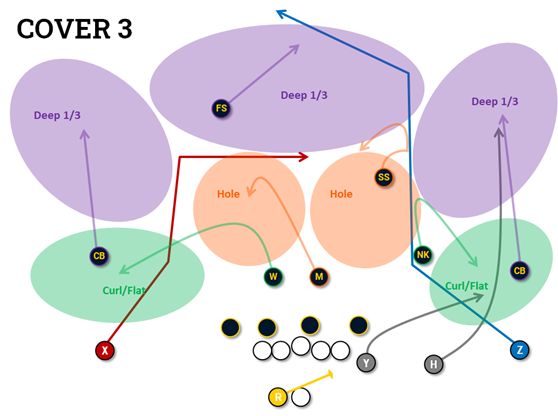
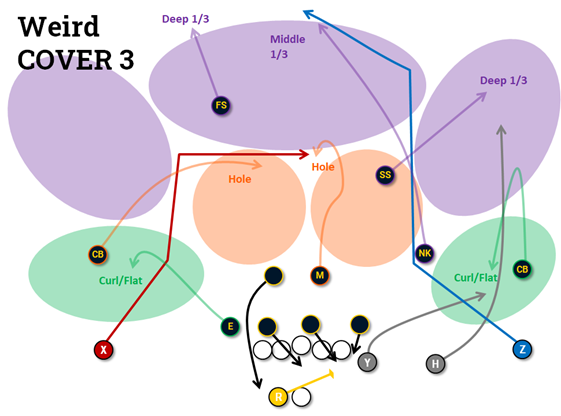
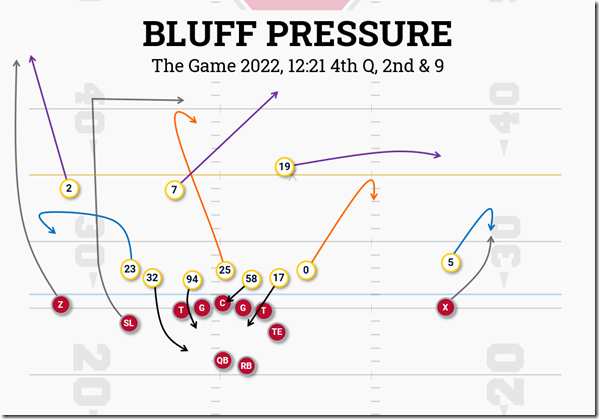
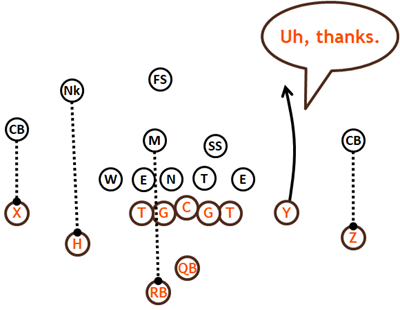
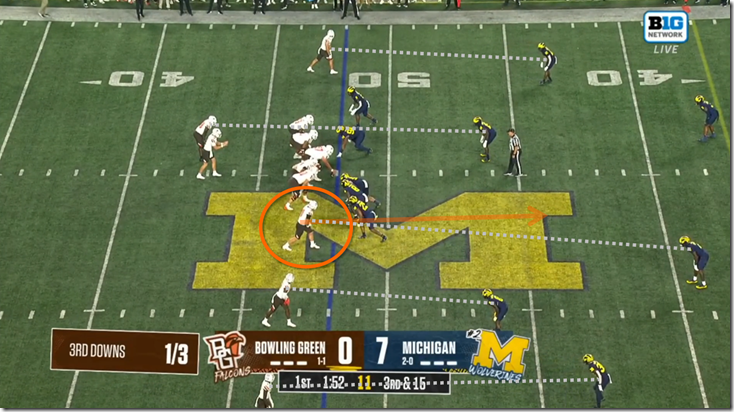
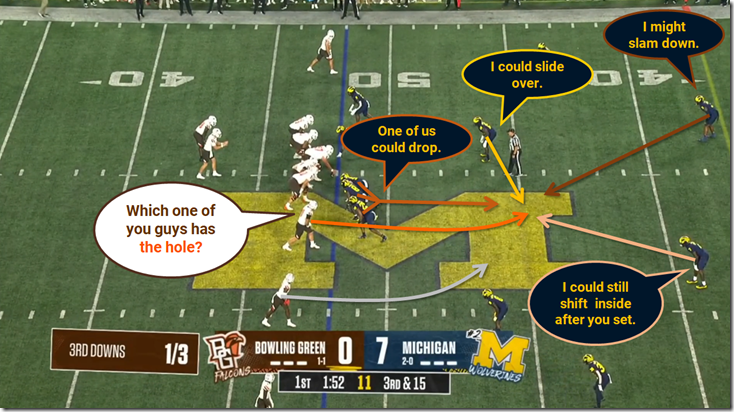
![switch[3] switch[3]](https://mgoblog.com/sites/default/files/switch%5B3%5D_thumb.gif)
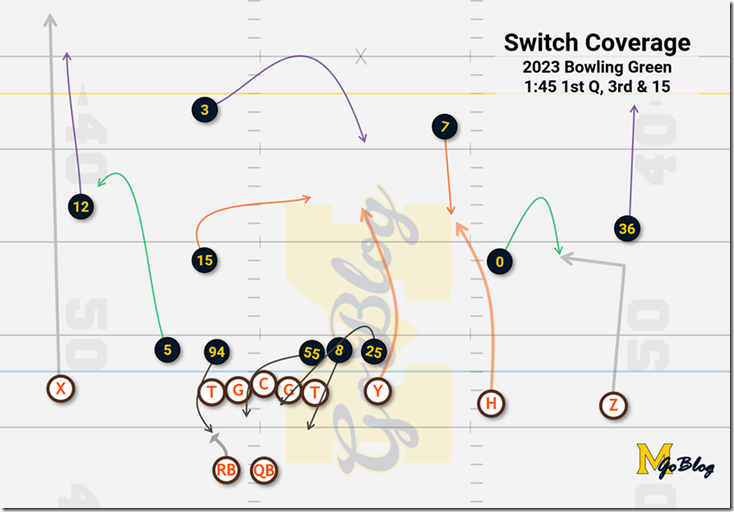
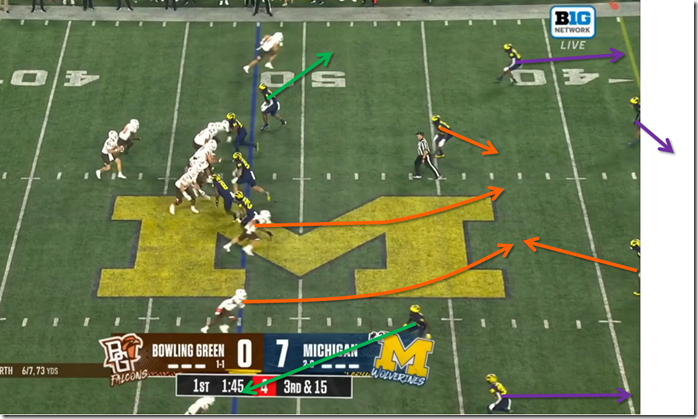
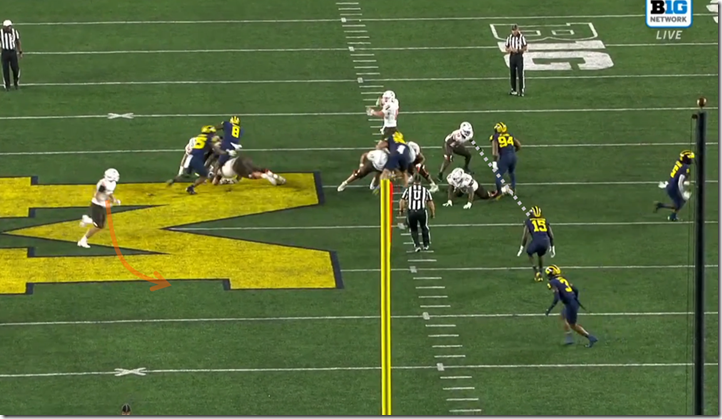
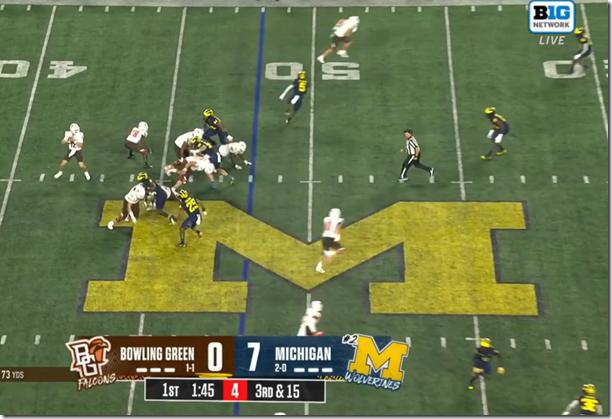
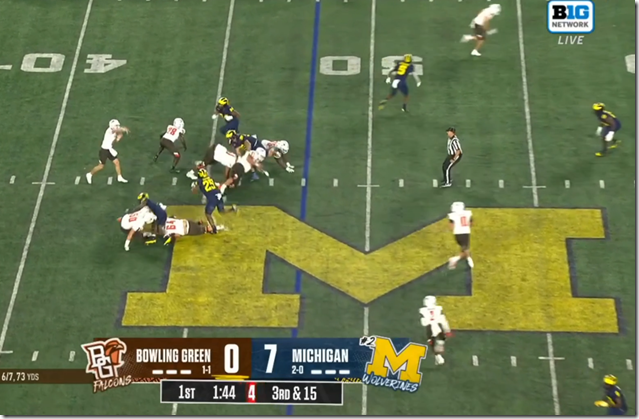
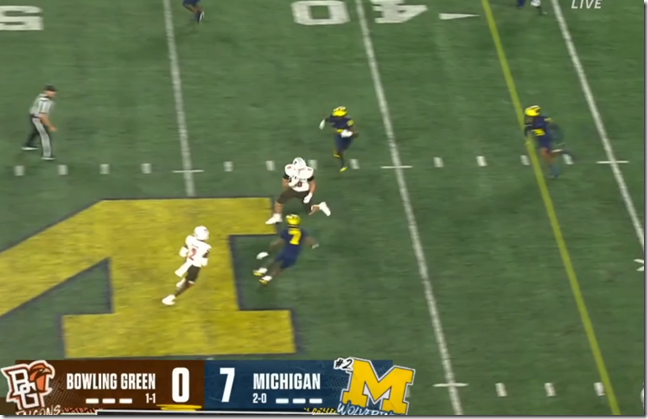
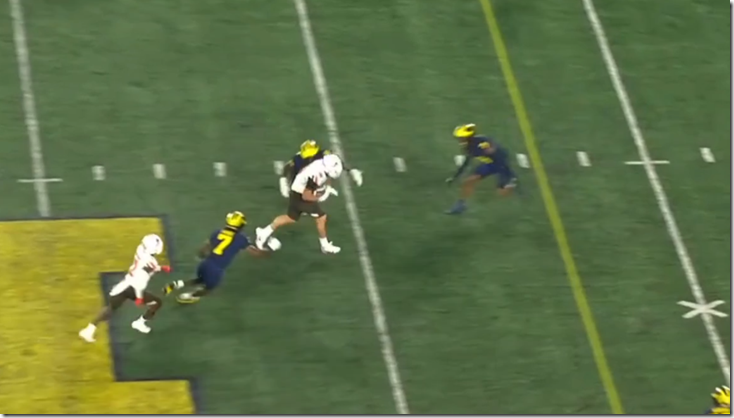
Comments